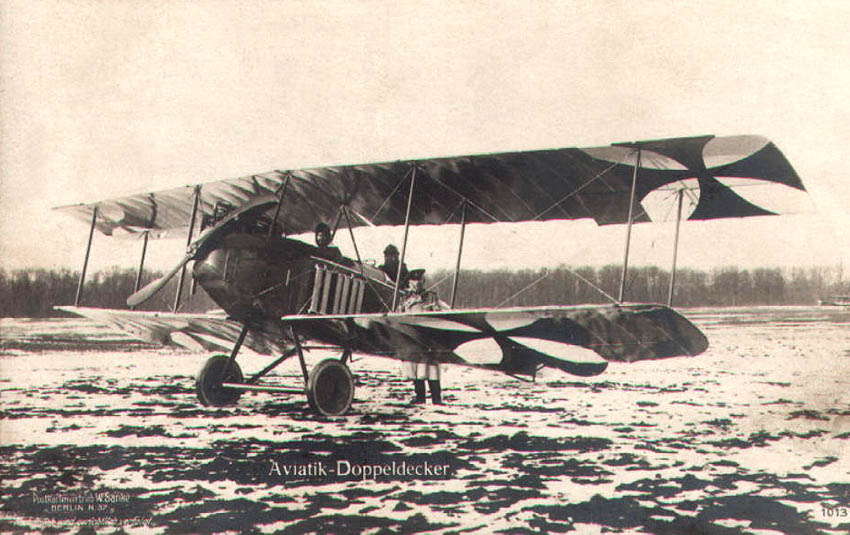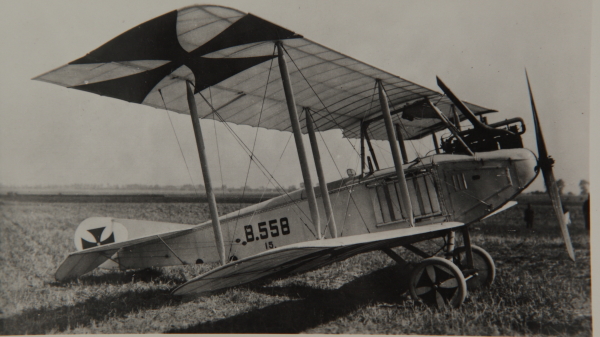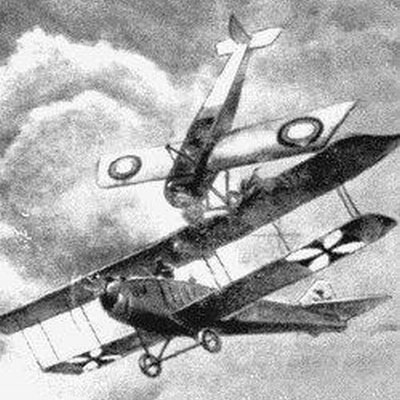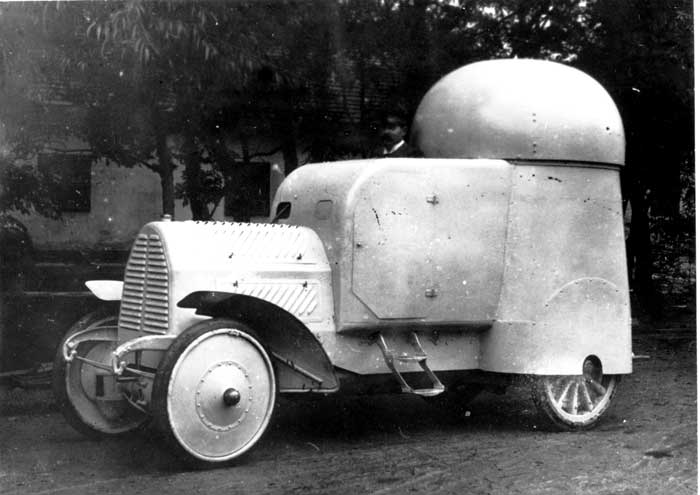|
Aviatik B.III
The Aviatik B.III was a reconnaissance aircraft built in Austria-Hungary during World War I. Aviatik's Austro-Hungarian subsidiary had built the German-designed B.II, and now further developed this design by adding a more powerful engine and armament in the form of a defensive machine gun and bomb racks. It was otherwise similar to Austro-Hungarian built B.IIs, incorporating the revisions that had been made locally to the original design. All were obsolete and out of service by the end of 1916. Operators ; *Austro-Hungarian Imperial and Royal Aviation Troops The Austro-Hungarian Aviation Troops or Imperial and Royal Aviation Troops ( or , ) were the air force of the Austro-Hungarian Empire until the empire's dissolution in 1918; it saw combat on both the Eastern Front and Italian Front dur ... Specifications References * {{KuKLFT B-class designations B.III 1910s Austro-Hungarian military reconnaissance aircraft Aircraft first flown in 1916 Aircraft wit ... [...More Info...] [...Related Items...] OR: [Wikipedia] [Google] [Baidu] |
WikiProject Aircraft
A WikiProject, or Wikiproject, is an affinity group for contributors with shared goals within the Wikimedia movement. WikiProjects are prevalent within the largest wiki, Wikipedia, and exist to varying degrees within Wikimedia project, sibling projects such as Wiktionary, Wikiquote, Wikidata, and Wikisource. They also exist in different languages, and translation of articles is a form of their collaboration. During the COVID-19 pandemic, CBS News noted the role of Wikipedia's WikiProject Medicine in maintaining the accuracy of articles related to the disease. Another WikiProject that has drawn attention is WikiProject Women Scientists, which was profiled by ''Smithsonian Magazine, Smithsonian'' for its efforts to improve coverage of women scientists which the profile noted had "helped increase the number of female scientists on Wikipedia from around 1,600 to over 5,000". On Wikipedia Some Wikipedia WikiProjects are substantial enough to engage in cooperative activities with outsi ... [...More Info...] [...Related Items...] OR: [Wikipedia] [Google] [Baidu] |
WikiProject Aircraft/page Content
A WikiProject, or Wikiproject, is an affinity group for contributors with shared goals within the Wikimedia movement. WikiProjects are prevalent within the largest wiki, Wikipedia, and exist to varying degrees within sibling projects such as Wiktionary, Wikiquote, Wikidata, and Wikisource. They also exist in different languages, and translation of articles is a form of their collaboration. During the COVID-19 pandemic, CBS News noted the role of Wikipedia's WikiProject Medicine in maintaining the accuracy of articles related to the disease. Another WikiProject that has drawn attention is WikiProject Women Scientists, which was profiled by '' Smithsonian'' for its efforts to improve coverage of women scientists which the profile noted had "helped increase the number of female scientists on Wikipedia from around 1,600 to over 5,000". On Wikipedia Some Wikipedia WikiProjects are substantial enough to engage in cooperative activities with outside organizations relevant to ... [...More Info...] [...Related Items...] OR: [Wikipedia] [Google] [Baidu] |
Reconnaissance Aircraft
A reconnaissance aircraft (colloquially, a spy plane) is a military aircraft designed or adapted to perform aerial reconnaissance with roles including collection of imagery intelligence (including using Aerial photography, photography), signals intelligence, as well as measurement and signature intelligence. Modern technology has also enabled some aircraft and Unmanned aerial vehicle, UAVs to carry out real-time surveillance in addition to general Military intelligence, intelligence gathering. Before the development of devices such as radar, military forces relied on reconnaissance aircraft for visual Artillery observer, observation and Reconnaissance, scouting of enemy movement. An example is the Consolidated PBY Catalina, PBY Catalina Maritime patrol aircraft, maritime patrol flying boat used by the Allies of World War II, Allies in World War II: a Formation flying, flight of United States Navy, U.S. Navy Catalinas spotted part of the Japanese fleet approaching Midway Island ... [...More Info...] [...Related Items...] OR: [Wikipedia] [Google] [Baidu] |
Öesterreichesche-Ungärische Flugzeugfabrik Aviatik
Automobil und Aviatik AG was a German aircraft manufacturer during World War I. The company was established at MĂĽlhausen (today in France) in 1909 and soon became one of the country's leading producers of aircraft. It relocated to Freiburg in 1914 and to Leipzig in 1916 and established a subsidiary in Vienna as Ă–sterreichisch-Ungarische Flugzeugfabrik Aviatik. During the war, the company became best known for its reconnaissance aircraft, the B.I and B.II, although the Austro-Hungarian subsidiary also produced a number of its own designs, including fighters such as the D.I. History The company was founded in December 1909 by the Alsatian Georges Chatel. II cover page It started with the license-production of French aircraft; Hanriot monoplanes and Farman biplanes. From 1912, the factory started building its own successful biplanes, designed by Robert Wild. Just at the beginning of World War One, on 1 August 1914 the company was relocated to Freiburg due to French threat, a ... [...More Info...] [...Related Items...] OR: [Wikipedia] [Google] [Baidu] |
Robert Wild (Swiss Engineer)
Robert Wild may refer to: *Robert Wild (poet) Robert Wild (or Wylde; 1617–1659) was an English clergyman and poet, known for his wit and controversial writings. Despite his presbyterian views, Wild held royalist in political beliefs and was eventually evicted from the position in 1662.. J ... (1615–1679), English clergyman and poet * Robert A. Wild (born 1940), president of Marquette University {{DEFAULTSORT:Wild, Robert ... [...More Info...] [...Related Items...] OR: [Wikipedia] [Google] [Baidu] |
Kaiserliche Und Konigliche Luftfahrtruppen
The Austro-Hungarian Aviation Troops or Imperial and Royal Aviation Troops ( or , ) were the air force of the Austro-Hungarian Empire until the empire's dissolution in 1918; it saw combat on both the Eastern Front and Italian Front during World War I. History The Air Service began in 1893 as a balloon corps () and would later be re-organized in 1912 under the command of Major Emil Uzelac, an army engineering officer. The Air Service would remain under his command until the end of World War I in 1918. The first officers of the air force were private pilots with no military aviation training. At the outbreak of war, the Air Service was composed of 10 observation balloons, 85 pilots and 39 operational aircraft. On 25 August 1914 (by the Old Style calendar still used in Russia) September 1914 New Style after trying various methods on previous occasions unsuccessfully, Pyotr Nesterov used his Morane-Saulnier Type G (s/n 281) to ram the Austrian Albatros B.II reconnaiss ... [...More Info...] [...Related Items...] OR: [Wikipedia] [Google] [Baidu] |
Aviatik
Automobil und Aviatik AG was a German aircraft manufacturer during World War I. The company was established at MĂĽlhausen (today in France) in 1909 and soon became one of the country's leading producers of aircraft. It relocated to Freiburg in 1914 and to Leipzig in 1916 and established a subsidiary in Vienna as Ă–sterreichisch-Ungarische Flugzeugfabrik Aviatik. During the war, the company became best known for its reconnaissance aircraft, the B.I and B.II, although the Austro-Hungarian subsidiary also produced a number of its own designs, including fighters such as the D.I. History The company was founded in December 1909 by the Alsatian Georges Chatel. II cover page It started with the license-production of French aircraft; Hanriot monoplanes and Farman biplanes. From 1912, the factory started building its own successful biplanes, designed by Robert Wild. Just at the beginning of World War One, on 1 August 1914 the company was relocated to Freiburg due to French threat, ... [...More Info...] [...Related Items...] OR: [Wikipedia] [Google] [Baidu] |
Austro-Hungarian Imperial And Royal Aviation Troops
The Austro-Hungarian Aviation Troops or Imperial and Royal Aviation Troops ( or , ) were the air force of the Austro-Hungarian Empire until the empire's dissolution in 1918; it saw combat on both the Eastern Front and Italian Front during World War I. History The Air Service began in 1893 as a balloon corps () and would later be re-organized in 1912 under the command of Major Emil Uzelac, an army engineering officer. The Air Service would remain under his command until the end of World War I in 1918. The first officers of the air force were private pilots with no military aviation training. At the outbreak of war, the Air Service was composed of 10 observation balloons, 85 pilots and 39 operational aircraft. On 25 August 1914 (by the Old Style calendar still used in Russia) September 1914 New Style after trying various methods on previous occasions unsuccessfully, Pyotr Nesterov used his Morane-Saulnier Type G (s/n 281) to ram the Austrian Albatros B.II reconnais ... [...More Info...] [...Related Items...] OR: [Wikipedia] [Google] [Baidu] |
Austro-Daimler
Austro-Daimler was an Austrian car manufacturer from 1899 until 1934. It was a subsidiary of the Germany, German ''Daimler-Motoren-Gesellschaft'' (DMG) until 1909. History In 1890, Eduard Bierenz was appointed as Austrian retailer. The company sold so well that it also began manufacturing the automobiles after uniting with Eduard Fischer's Industrial and manufacturing engineering, engineering factory. The works were located at Wiener-Neustadt. By this subsidiary ''DMG'' became the first automotive multinational in history. Thus, on 11 August 1899, the Austrian Daimler Engine Society was founded. Whilst the assembling parts stemmed from Stuttgart, in 1900 they built their first automobile which featured 2 cylinders, , and 4 seats. Soon they started producing engines for luxurious cars, trucks, buses, maritime ships, and trains. Paul Daimler era In 1902, Paul Daimler, Gottlieb Daimler's son, took charge of the Technical Department. He developed a compact car (8 hp, 45 k ... [...More Info...] [...Related Items...] OR: [Wikipedia] [Google] [Baidu] |
Schwarzlose MG M
Schwarzlose may refer to: Firearms * Schwarzlose MG M.07/12, an Austro-Hungarian medium machine gun * Schwarzlose Model 1898, a German semi-automatic pistol * Schwarzlose Model 1908, a German semi-automatic pistol featuring a "blow-forward" action People * Andreas Wilhelm Schwarzlose (1867-1936), a Prussian firearms designer {{disambig, surname ... [...More Info...] [...Related Items...] OR: [Wikipedia] [Google] [Baidu] |
Aviatik Aircraft
Automobil und Aviatik AG was a German aircraft manufacturer during World War I. The company was established at MĂĽlhausen (today in France) in 1909 and soon became one of the country's leading producers of aircraft. It relocated to Freiburg in 1914 and to Leipzig in 1916 and established a subsidiary in Vienna as Ă–sterreichisch-Ungarische Flugzeugfabrik Aviatik. During the war, the company became best known for its reconnaissance aircraft, the B.I and B.II, although the Austro-Hungarian subsidiary also produced a number of its own designs, including fighters such as the D.I. History The company was founded in December 1909 by the Alsatian Georges Chatel. II cover page It started with the license-production of French aircraft; Hanriot monoplanes and Farman biplanes. From 1912, the factory started building its own successful biplanes, designed by Robert Wild. Just at the beginning of World War One, on 1 August 1914 the company was relocated to Freiburg due to French threat, a ... [...More Info...] [...Related Items...] OR: [Wikipedia] [Google] [Baidu] |





